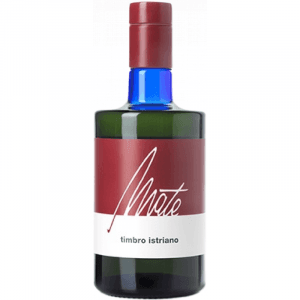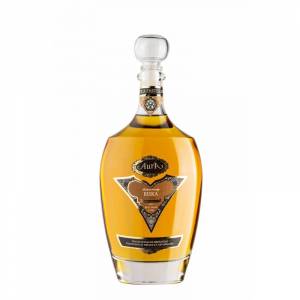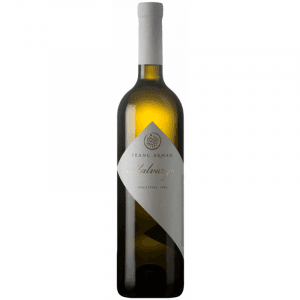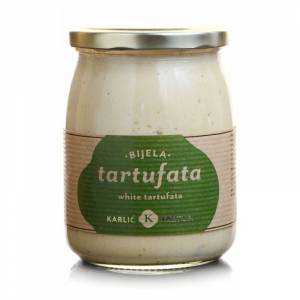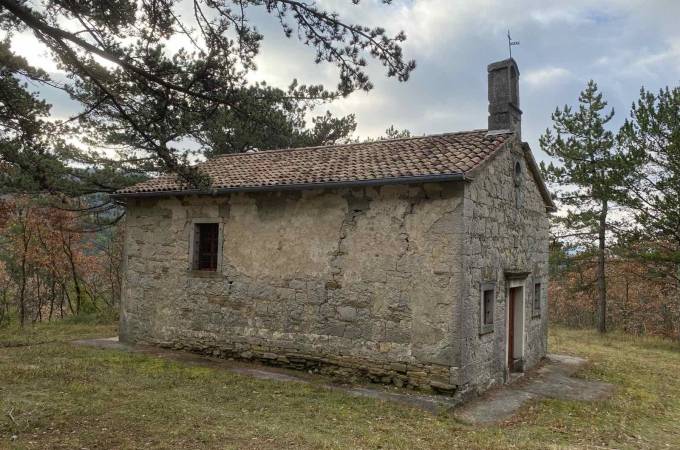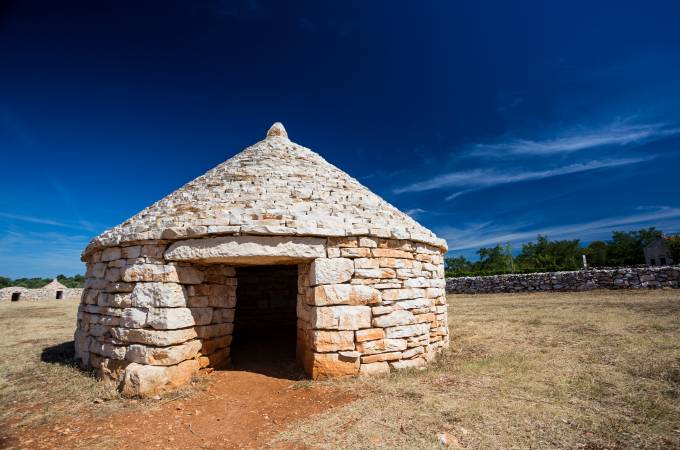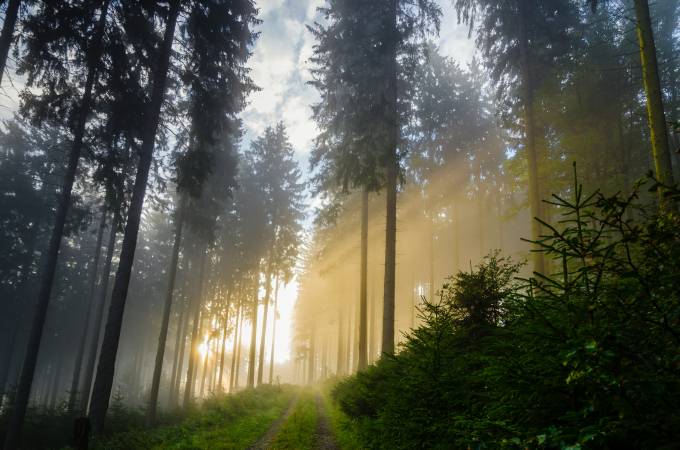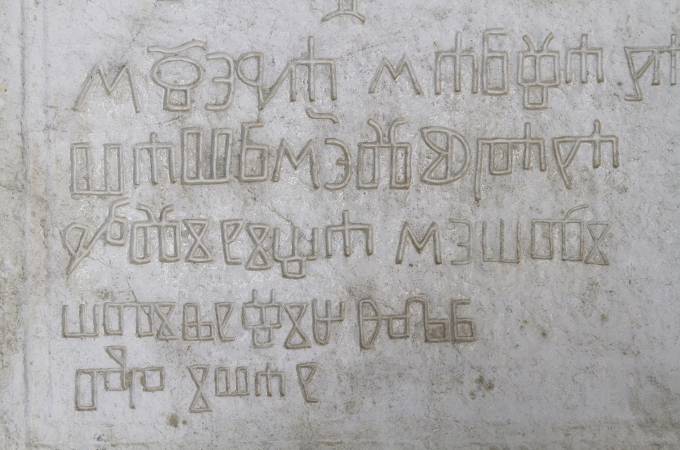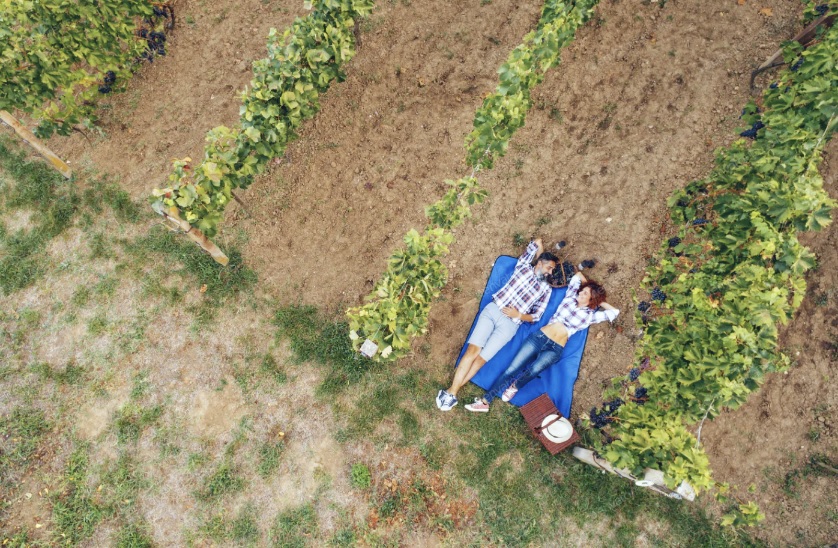Culture
The Magical Istria - Legends and Stories
 August 20, 2021
August 20, 2021
Landscapes and food are not the only things that are magical in Istria. Stories of giants and fairies, vampires and dragons, witches, saints, and kings intertwine in the colorful fabric of Istrian history, making it a bit magical and completely irresistible. All those stories still live in the efforts of Istrians to preserve them through festivals, celebrations, museums and books. And there are many stories: every Istrian place can tell you at least one.
Who built Istrian towns?
One of the most famous and widespread legends is that of giants who inhabited the Mirna Valley in ancient times. They were so big that they threw tools at each other from hill to hill. Through their work, Motovun, Grožnjan, Vrh, Roč, Sovinjak, and Završje were created, and from the pebbles that remained the giants built the smallest town in the world - Hum.
Apart from cities, the strong hands of giants are also responsible for parts of the Istrian landscape. The Dragonja River is named after its creator, the giant Dragonja, and Mirna after his wife. At the request of the villagers, he plowed furrows from the lake above Ćićarija to the sea, to bring water to dry Istria. He started plowing the third furrow, at the foot of Pazin, but the wife of the Pazin captain mocked his age, so he left insulted. Due to the unfinished river that was flowing, the people of Pazin almost perished, so the giant took pity on them, stomped the ground, and created a pit into which the water plunged. Pazinčica and Pazin Cave were created. Thanks to its dramatic dramatic appearance, Pazin Cave has inspired many stories throughout history and still attracts tourists, speleologists, and adventure lovers.
Even better known than Dragonja is certainly Veli Jože, the Motovun giant serf, who learned the value of freedom and inspired Vladimir Nazor to write one of the most famous allegories about Istria, the Istrian man and his struggle for identity.
The first European vampire lived in Kringa
Not as well-intentioned as the Istrian giants, but certainly known and inscribed in history books, is Jure Grando. A peasant from Kringa, Jure most likely led a very ordinary life. But in a death that did not go according to plan, he remained recorded as the first European vampire. An unusual incident was recorded by Johann Weichard Valvasor, and it happened according to stories in 1672. It was preceded by 16 long years of fear and terror that Jure shone on Kringa. With the help of a good pastor, the locals fought against the vampire, and a few centuries later they embraced him as their mascot, legend, and tourist attraction.
Vampires, witches, fairies and other magical creatures of Istria
In addition to giants and vampires, Istria was inhabited by other magical creatures. The fairies danced on the forest glades and brought happiness to the people they would show themselves to. One night they built the Pula Arena, popularly known as Divić-grad (Divić = miracle).
If you are looking for a buried treasure that is, apparently, abundant in Istria, the land of miners, according to the legend you should seek the help of the forest spirit of Malik - you will recognize it by its red cap.
If you have strayed, it is possible that Orko, a demonic horse, carried you away from your path on his back, so turn your shirt upside down to protect yourself.
Similar protection is valid in the fight against štriga, Istrian witch, but it is safest to leave this fight to krsniks - Istrian protectors and witchers. Completely the opposite of werewolves, moraines, witches and other Istrian demons, krsniks are simply good, they protect, heal and defend man from misfortune.
Dragons in Istria
What also cures, according to stories, are dragon furrows. Those lines according to the esoteric tradition surround the Earth and supply it with positive energy. Perhaps this is the reason why everyone in Istria feels relaxed and eager to return to it: the peninsula is known as a place dotted with these furrows, and Motovun as a center where three such lines intersect. One of them continues to the Little Holy Angel near Poreč, a hill on which the "Istrian Stonehenge" is located - the oldest and best-preserved cult site of pre-ancient people who lived in Istria before the Histrians.
And long before them, to complete the story of dragons in Istria and return to the very beginning of history, somewhere in the time of the Cretaceous, dinosaurs walked on the Istrian soil. Their bones and footprints inspired many legends and stories: the one about St. George who saved people from the dragon that devoured them, the dragon trapped in the Rovinj cave, and the one about two dragons guarding the entrance to the underground below Pićan, where a festival of Istrian legends - the Legendsfest, is held these days. The peninsula itself reminds some of a dragon's face, and according to one legend, it is guarded by as many as three of these creatures: the mountain dragon of Učka, the water dragon of the Adriatic and the great dragon of the north that stretches through Slovenia.
About war and love - historical Istrian legends
In addition to these, there are numerous historical legends. The crown of King Tomislav was lost forever in Blaz Bay, while Dvigrad hides the treasure of Captain Morgan. Nesactium near Pula is the resting place of the legendary Histrian king Epulon, the town of Sipar,where the beautiful Rosamund lived, was sunk in the seabed near Umag, and a sad fate befell the lovers Gaius and Lydia on the Brijuni Islands.
Attila, the Scourge of God, ravaged these parts until his troops were frightened by the bells of Grožnjan that started ringing on their own. Attila himself allegedly ended up in God's Field near Vižinada, when a shepherd hit him in the eye with a stone.
We probably haven't even scratched below the surface: in Istria, myths and legends really have no end. Enjoy them. The next time you visit the green peninsula, organize your fairytale trip and with a little bit of imagination you will notice traces of magic in almost every corner: fairy whispers in the Arena, the rumble of giants in rivers and abysses, the eerie silence of the night in Kringa, the sounds of fight between krsniks and štrigas in stormy clouds...
